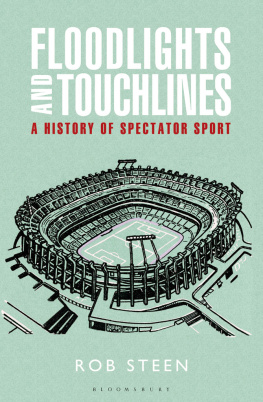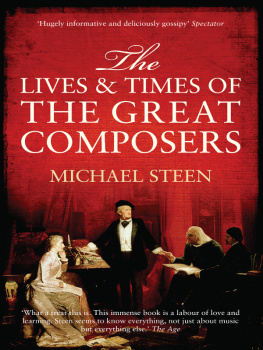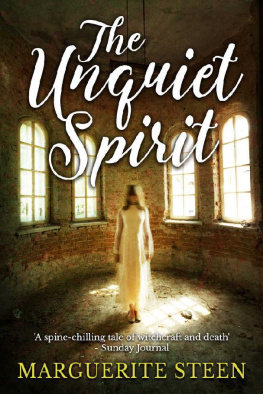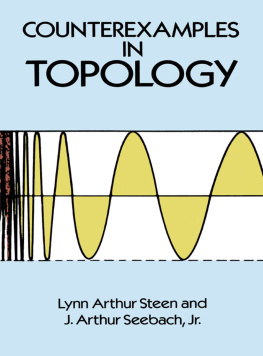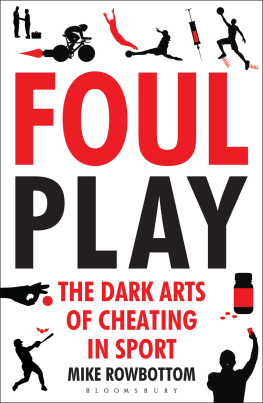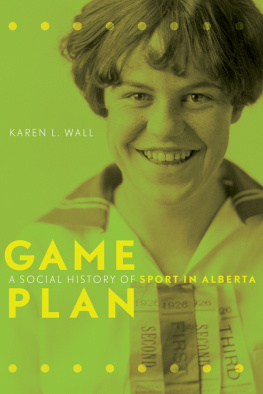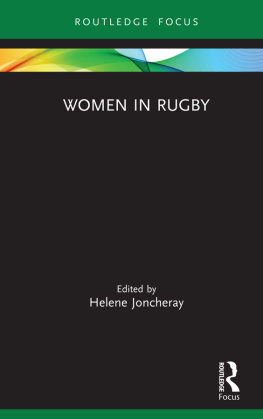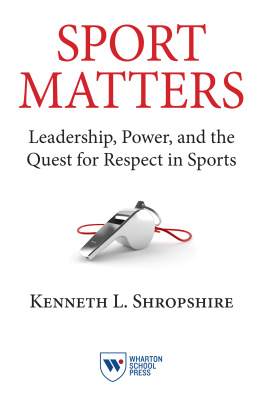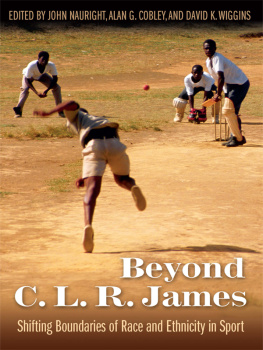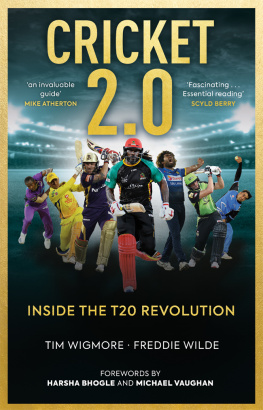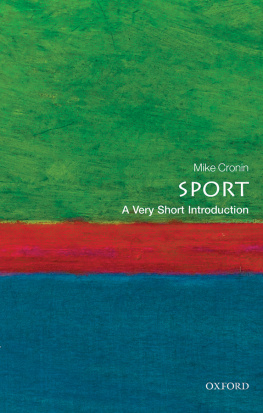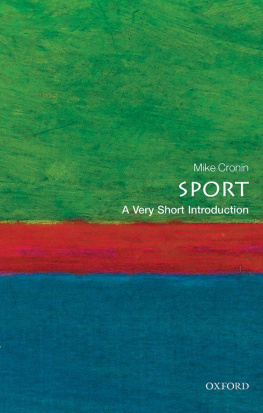
To all the wondrously defiant, ball-ignoring women I love, especially Laura, Evie, Suzie and Jane. Without you, life would be two parts Breaking Bad to three parts Mad Men to far too many parts Fawlty Towers.
To the late Frank Keating, without whom I would never have had the audacity to even contemplate this labour of love and angst. May your adjectival nouns never rust.
One windswept morning many moons ago, I attended an MCC committee meeting at Lords for the first and almost certainly only time. Not because Id finally conquered a slightly irrational aversion to egg-and-bacon-with-a-hint-of-tomato ties, but because I was hoping to persuade the club to support a DVD history of cricket, a project wherein, in my wildest and most fanciful dreams, I envisaged myself doing for the game what the American documentarist Ken Burns did for my second favourite sport, baseball. Optimism drained away as soon as Robin Marlar, the reigning MCC president, volunteered his haapworth.
Though a valued former colleague at the Sunday Times, and an extremely generous and kind reviewer of my books, Robin didnt think I was the man for the job not one jot. If you want a Guardian history of cricket, Robs your man, he proposed with a discreet titter (though not so discreet that it wouldnt have been perceptible to Frankie Howerd at 100 paces and Vincent van Gogh post-love sacrifice). Robin, I should add, is about as likely to buy the old leftie rag as he is to renounce fine wine.
Even so, while this book may indeed be perceived as a Guardian-esque history of sport, the traitorous truth as the litter of references between these covers will affirm is that Im a Times reader these days, albeit not for political reasons (though it is far more illuminating, as one of the robustly unconverted, being preached to by the loyal opposition). Once a Guardian man, always a Guardian man, they say, but what do they know who only newspapers know? So thank-you, Robin, for the motivation.
Expertise is a curious thing. In 2012, Paul Ehrlich was elected to the Royal Society, raising grave questions about that ancient but worthy clubs selection policy: in 1968, after all, Ehrlich had predicted in his book The Population Bomb not only that 65 million Americans would die of starvation by 1985, but that it was even money, come the end of the century, that famine would have wiped out the entire British population. In an undertaking of this possibly hubristic ilk, therefore, it seemed sensible to consult a wide range of voices and laptoppers. It pays to requisition (or even steal) the views of others, whether to toast them as founts of commonsense and hence reinforce ones own perceptions or to make a point by contradicting them. It also pays to quote them in order to supply relief from your own ramblings and, above all, to help cover what you werent old enough, clever enough or there enough to have seen or heard or deduced yourself.
A hefty chunk of my gratitude falls, therefore, on four owners of broad-minded shoulders, fellow scribblers all: Simon Barnes, chief sportswriter of The Times, author, Proust-lover, bird-fancier and sportswritings resident philosopher-in-chief; Huw Richards, ballgame historian par excellence and sportswritings most unsung commentator, not to mention the only person ever to serve simultaneously as chief rugby correspondent of the Financial Times and chief cricket correspondent of the Herald Tribune; Dave Zirin, Washington DC based columnist, author, activist and sportswritings conscience-in-chief; and Jed Novick, the finest, sweetest wordsmith ever to support Tottenham, and the funniest if laziest sportswriter I know. As I recently confessed to Simon, when seeking permission to publish one or two lengthier extracts, few days go by when I dont curse him for an insight or idea I wish Id thought of first. As I told Dave while we were putting mankind to rights at my kitchen table in 2012, there isnt a week that goes by when his edgeofsports.com column doesnt enlighten me about the wrongs perpetrated in the name of the competitive arts in the United States. And as I remind Jed and Huw at least once a month, nobody else was allowed to see my final drafts.
I must also thank all the other industrious and perceptive hacks and historians whose work I have scavenged and pillaged while striving to squeeze a jumbo-sized quart into this half-pint pot (for those I did not manage to contact for permission, I hope you can tolerate admiration from afar). I would also like to thank the following, for their thoughts and steers and helpful reminders of yet another slant on an illuminating tale I may have unaccountably overlooked or underplayed: Alan Little, honorary librarian at the All England Club; Adam Chadwick, the MCC curator; Neil Robinson from the Lords library; Peter Wynne-Thomas, Nottinghamshire County Cricket Clubs doughty historian; Andrew Currie at Bonhams, the auctioneers; my colleagues at the University of Brighton (past and present) Daniel Burdsey, Thomas Carter, Jo Doust, Ian McDonald, Gary Stidder, John Sugden and Alan Tomlinson plus a veritable Whos Who of contemporary sportswriting and scholarship: Lincoln Allison, Sir Hilary Beckles, Rahul Bhattacharya, Harsha Bhogle, Matthew Engel, Gulu Ezekiel, Stephen Fay, Nigel Gibson, Gideon Haigh, Andrew Jennings, Boria Majumdar, Mike Marqusee, Toby Miller, Kevin Mitchell, Richard Moore, Kadambari Murali, Nick Pitt, John Price, Mark Ray, Jeffrey Sammons, Colin Shindler, Ric Sissons, Sharda Ugra, Stephen Wagg, John Williams, Jonathan Wilson, Neil Wilson and John Young. That some not only granted permission to reproduce their work but took up my offer to chip in the occasional bon mot left me feeling as if I now have a small sense of what Ringo Starr felt like when he roped in Levon Helm, Rick Danko, Todd Rundgren, Jack Bruce, Nils Lofgren, Clarence Clemons and Dr John to join his All-Star Band.
I also owe a deeply humble debt to some of those whose journalistic dreams I have tried to encourage, for reversing roles and teaching me a thing or two take a bow, Jordan Blackwell, Haydn Cobb, Jonathan Dyson, Duncan Hewitt, Maria Hudd, Gemma Nash, Andrew Nove, Michael Nussbaum and Jimmy Pugh. And a rather more substantial one to the exceedingly honourable Tim Berners-Lee, whose clever little invention made my research both astonishingly quicker (it only took three years) and, I hope, immeasurably better informed. Not that I have given up cardboard and ink, hence my guilty thanks to Amazon and their ruthlessly efficient bookstore-slaying ilk, although I cant say it didnt disturb me to find so many ex-library books suddenly in my possession.
Heartfelt mercis, too, to the Charlottes, Atyeo and Croft, Kirsty Schaper and Sarah Cole, who presided over this venture with enthusiasm, encouragement, patience and just the right amount of what my sister calls noodging, not to mention such compassionate indulgence on the word-count. I also owe a vast debt to my incredibly diligent copy editor, Julian Flanders. And to Tony Collins, sporting archaeologist of wide and deserved repute, for passing the gauntlet backwards (as a good rugby man should). Id also like to thank Marshall McLuhan, the Canadian communication theorist who insisted that the medium was the message, and turned up as himself in Woody Allens Annie Hall as the punchline in a hilarious example of a comic skewering academic pretension. Fortunately, his prediction half a century ago, that the electronic age would drive the printed word out of business, has proved premature thus far.
To the spiritual and nutritional supporting cast. Mercis unconfined to the minstrels who accompanied me on those fraught and frankly mindbending final laps Todd Rundgren, Aimee Mann, Paddy McAloon, Weather Report, Lloyd Cole and The Commotions, Chic, Steely Dan and Tommy James and The Shondells, the last of whose finest four minutes, Crystal Blue Persuasion, is now imprinted forever on my gently fried, no longer gentrified brain; to Brigitte, Sophie and all the lovely girls at Flint Owl Bakery, purveyors of pitying smiles and the most delicious caffeine fixes in Christendom (or even Jewdom); and to Steveski, for nourishing me with your juicy peaches (those nice people at Universal better not cut that condom scene!).
Next page
